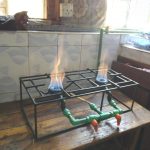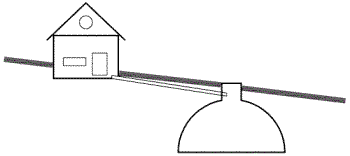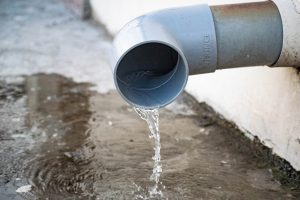Biogas pipeline installation refers to the pipe connection from the biogas digester to biogas consumption points. This article looks at the factors to consider when installing a biogas pipeline, precautions taken in constructing a biogas pipeline, and leak checking in biogas pipeline installation.
1.0 Introduction
Biogas pipeline installation refers to the pipe connection from the biogas digester to biogas consumption points. These connections are a crucial part of the construction of the plant. For this reason, one must pay attention to detail, as minor flaws can lead to the failure of the entire system. Use top-quality pipes is required for the tasks. Thus, the implementation of galvanized pipes and PVC pipes as biogas pipes are highly recommended. Some of the most common biogas issues arise from its piping. They include low pressure, gas leaks, and the presence of water in the pipes. This article aims to inform on the factors to consider when installing a biogas pipeline, precautions for installing a biogas pipeline, and how to check for leaks.
2.0 Factors to Consider in Biogas Pipeline Installation
The following factors are inclusive but not limited to biogas pipeline installation.
a) Distance
Piping of biogas system can run for hundreds of meters while retaining suitable pressure for cooking, however, short-distance connections are more advisable. Lay the pipes by burying the pipes in trenches of a minimum of 30cm deep. These pipes should be between one inch and half inches preferably class ‘C’ PVC plastic, galvanized steel pipes, or PPR pipes.
b) Quality of Pipes
Biogas production takes place in the biodigester and the gas storage is in the gasholder. Activities such as heating and electricity generation use biogas. Consequently, the gas must be conveyed to its point of application.
Gas transportation can be done either through PVC, galvanized, or rubber pipes depending on cost and durability. However, care must be taken in the design of the pipelines to avoid leakage and unnecessary pressure loss.
Seal all fittings such as bends, valves, and meters properly sealed to prevent leakages. When using PVC pipes, use Teflon tapes to properly seal joints.
c) Slope
The biogas conveyed from the gasholder is saturated with water vapor. This water condenses when it comes in contact with the walls of the pipe. If this condensed water is not drained regularly, it will ultimately clog the pipeline. Hence, the piping system for biogas systems must always have a slope, where consumption points are higher than the digester.
The figure below shows a normal slope.
The slope should guide the condensation water back into the digester. However, in case a slope is not viable, a water outlet to drain the water has to be fitted in the pipeline. Therefore, the most convenient way of executing a water trap is by establishing a U-shaped pipe at a T-joint mounted at the (or each) lowest point of a piping system (Kellner, 2002).
Position the water drain vertically below the lowest point in the pipeline so that water will flow automatically by gravity to the outlet. In addition, the water should be drained periodically. Consequently, place the location of the water outlet in a convenient place.
The figure below shows the application of a T joint system
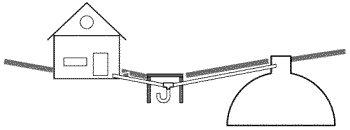 A T-joint system attached to a biogas plant
A T-joint system attached to a biogas plant
Source: Andreas & Micheal (2015)
d) Cost
Reducing the distance and number of bends greatly encourages the general cost to go down due to the usage of fewer resources. However, it is highly advised to buy cheaper and low-quality pipes in order to save on cost.
Note
Biogas pipes vary in quality and costs. As illustrated, the figures below show examples of the recommended pipes for use including PVC pipes and galvanized pipes.
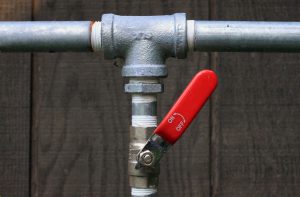 Galvanized pipe / source: https://mpjplumbing.com.au |
3.0 Precautions in Biogas Pipeline Installation
a) Avoid obstacles that will introduce bends and fittings. Too many bends will result in pressure loss which will eventually affect the performance of the gas appliance.
b) The selected path should be devoid of objects that can damage the gas pipe. In light of this, under no circumstances should the gas pipeline pass through the children’s playground.
c) Select the shortest possible route from the gas tank to the point of application. For this reason, long pipes tend to lose pressure along the way.
d) Do not lay the pipes on the bare floor. This is to avoid damages leading to leakages.
e) The artisan should avoid fittings other than a pipe-nipple between the main gas pipe fitted in the dome and the main gas valve to avoid the risk of gas leakage.
f) An engineer should choose a good quality pipe in the installation of a biogas project. Choice of pipe is very important, first to prevent damage which will lead to gas leakage and secondly to prolong the life of the system.
Note
Protect the outlet well in a chamber of dimensions 30 cm length, 30 cm breadth, and 50 cm deep. Cast the cover for this chamber during the period of slab casting for the outlet tank.
The final stage of the construction is to connect the gas to either the gas stove for heat, the generator for electricity, or the gas lamp for light. At the end of the gas pipeline, install a reducing valve with a switch. Attach a small neoprene rubber gas hose to fit on it. The neoprene rubber hose must be of the best quality to ensure the longevity of use.
In the case of a generator, there might be the need to install a biogas pump and a pressure gauge. This is due to the fact that the biogas pump will increase the volumetric flow rate of the gas which is required for the smooth running of the generator.
4.0 Leak Checking in Biogas Pipeline Installation
Check for gas leakage in all pipe joints and in the entire pipeline as soon as gas production in the digester starts. A simple rule of thumb is to use soap solution.
Mix powdered soap in water to form a foam. Thereafter, apply the foam on all joints, valves, measuring devices flow, and pressure measuring devices and pumps. If you witness that the foam is either moving or breaking, then there is gas leakage.
Quickly shut off the main gas valve on the turret, then disengage the joint before properly sealing it again. Thereafter, carry out the foam testing again until you are sure the joint is properly sealed (Bensah & Ahiekpor, 2021).
5.0 Conclusion
Despite the relative ease of the task, one should pay proper care and attention to the installation of the biogas pipeline in accordance with the article. As piping ranks top in the most common areas leading to failure or reduced productivity. Therefore following the guide will lead to constructing proper piping systems and a much easier time during troubleshooting in case of any problem.
References
Bensah, E. Antwi, E. Ahiekpor, J. (2021). Guide For The Design And Construction Of Fixed-Dome Biodigester. Retrieved from https://www.researchgate.net/publication/351818542
Kellner, C. (2002). Manual for the Construction of a Bio Digester, “LUPO” Design. Edition for Ethiopia, 1-30.
Michel, A. (2015). Piping Systems for Biogas Plants. Retrieved from https://energypedia.info/index.php?curid=814
This article is an excerpt from the book “The Blue Flame: Biogas Training Blueprint”
Suggested Citation in APA
Wanjohi, A.M. (2022). The Blue Flame: Biogas Training Blueprint. Nairobi: Kenya Projects Organization
For inquiries about Biogas installation for Domestic and Commercial use at household and institutional levels, kindly contact KENPRO Support Team or call us +254725788400.

